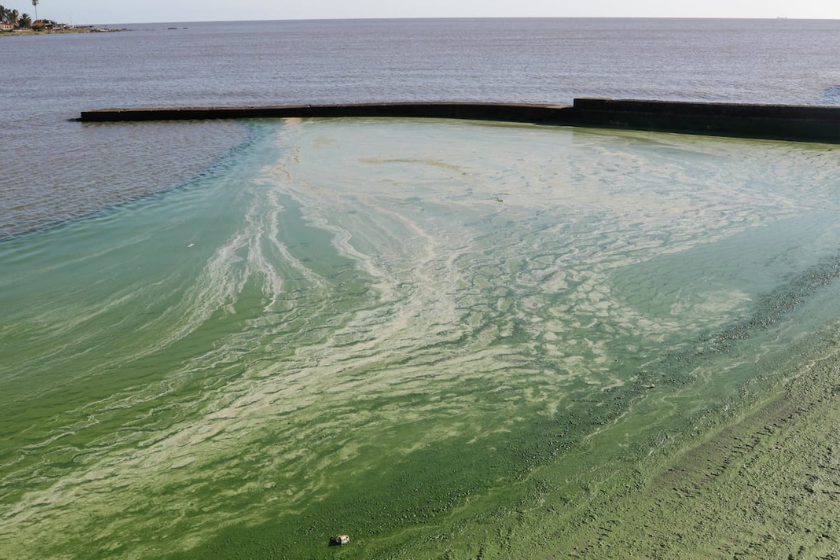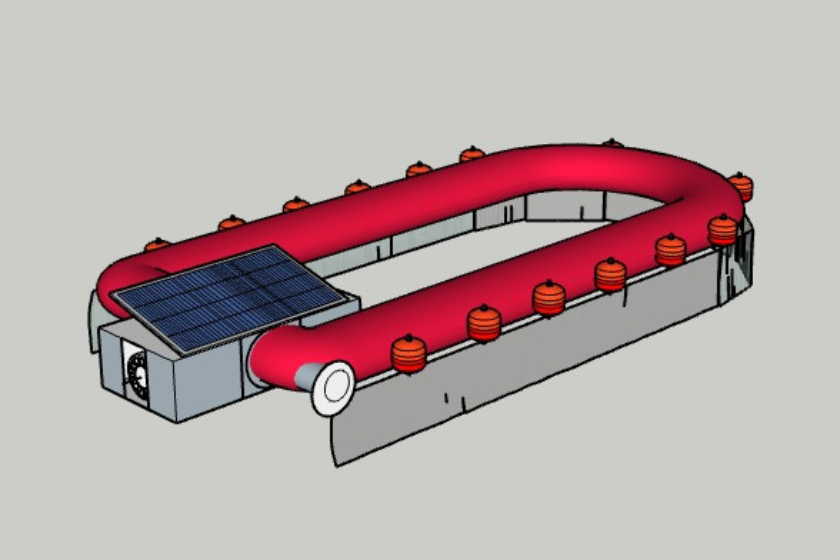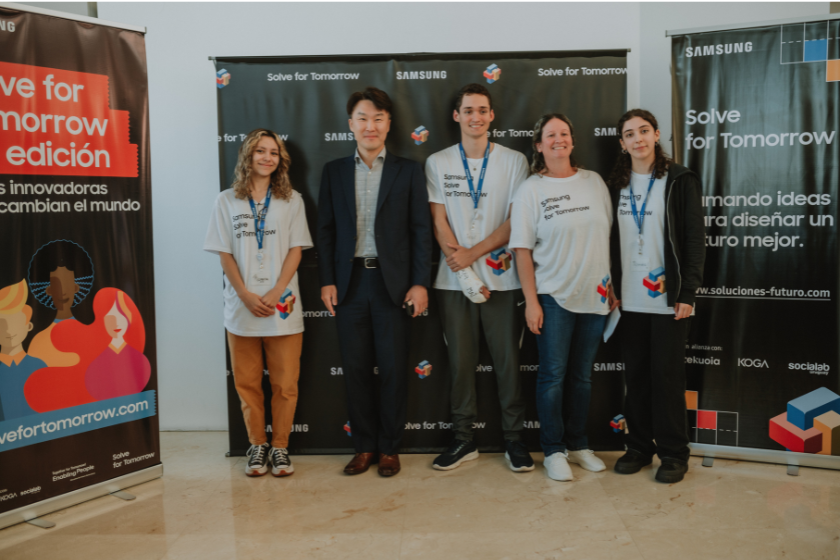“Cyanobacteria” may seem strange to many people, but they are part of life in Carmelo, a city o n the banks of the Río de la Plata, in western Uruguay. Also called blue or cyanophycean algae, cyanobacteria are microorganisms that grow very quickly in the summer and form a large green spot that dominates aquatic environments like a plague. But there is a solution: to filter them with a simple device, made from a variety of common materials. The discovery made by a group of students was one of the finalists in the 10th edition of Solve for Tomorrow in Argentina, Paraguay and Uruguay.
In contact with the skin, cyanobacteria can cause irritation and this harms tourism and the city’s economy. “Carmelo is a city surrounded by water and it is common in summer not to be able to bathe due to cyanobacteria. The students thought about the difficulties that this entails and wanted to change that reality,” says teacher Victoria Calcaterra, who mediated the project, titled “Cianobacterias”(Cyanobacteria, in english).
The young people involved with the topic were in the sixth year of high school (the last year of compulsory schooling) at the high school Liceo Miguel Banchero Noain. In Uruguay, this degree includes a subject called Economic and Social Studies, characterized by project-based learning. “Throughout the year we sometimes have up to 70 projects simultaneously, thus many ideas arise and we develop them,” explains the educator, responsible for this subject.

For the three teens from “Cianobacterias”, one of the kickstarts was a lecture at the school about the matter, with a group from the Faculty of Sciences of Uruguay. Taking this into account, the students made an empathy map and defined the “persona”, which is the representation of the “ideal customer” of a project or company. That is a resource used to better understand the needs of the final customer. “That person could be anyone in the city, since this problem impacts everyone in some way,” points out the teacher.
Putting research into practice
Then, the first step was to engage in in-depth research on cyanobacteria: why they appear, what their properties are and how they could be removed from the water. But putting the ideas into practice was a path full of challenges. Not always when they went to collect the organisms they were there. “There were about 20 items of conditions that had to be met for the appearance of cyanobacteria. For this project, we focused on four: temperature, humidity, what had to do with water currents and times of year,” she reports.
At times when conditions were favorable and these organisms were seen, they had difficulty filtering them from the water. “They looked for various alternatives as references: from the hemodialysis mechanism that filters the blood to the resources used in the countryside to make water drinkable,” she describes.
In the end, they used three types of filters. The first was the thickest and was made with a mosquito net material. The second used gauze similar to that used in dialysis. The last one was smaller, a manual pool cleaning device was used. “We reduced the quantity because we knew more or less the size of a cyanobacteria and how to filter it,” she adds. The team was careful not to filter fish or other species along with the bacteria.
It was very positive to see how they transformed in the process. They gained resilience in the face of challenges and even those who were very shy and had never participated in something like this, in the end had a different attitude. The families were also very grateful, says the educator.
They tested the cleaning system and designed the prototype in a digital version, which can now be made by anyone, through 3D printing. The filtering device can be connected to an Arduino board that detects when there is a possible cyanobacteria bloom. In these cases, the float is deflated and, thanks to a motor, it is rolled towards the collection area.

Another very important moment for the team was the trip to Buenos Aires, for the Solve for Tomorrow awards ceremony. “We had a remarkable experience because of the contact with other people, seeing the research they did, the resources they used,” she recalls.

Collaboration to advance
For the team, collaboration with allies was essential. They had the support of the school’s Chemistry teacher, who guided them on the filtration mechanisms and the chemical properties of cyanobacteria. In addition, the Biology teacher helped to select the necessary materials. The Escuela Técnica de Reparaciones, Construcciones Navales y Anexos (Technical School of Repairs, Naval Constructions and Annexes), made available a pH meter to detect water conditions. Furthermore, the state department responsible for drinking water supply, Obras Sanitarias del Estado (State Sanitation Works Office), indicated the best places to collect cyanobacteria in the city.
The project is now available to the public authorities as a basis for the development of a larger mechanism that can be used in the city. “The students will continue to the university but they left the project so that at the school and the Faculty of Chemistry, other people could access the materials and continue working with cyanobacteria if they want,” tells the teacher. Together with researchers from the Faculty of Sciences, the team still sees a future possibility of producing biofuels with these organisms.




